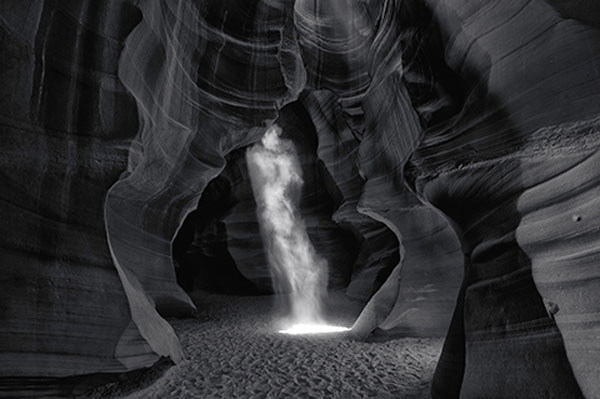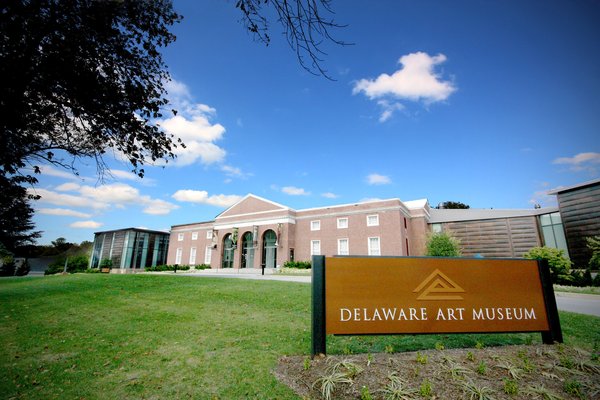Label: sale
Wednesday 10th December 2014The 6.5 Million Dollar Photo

The world of art over the course of the last century or so is often told in the impressive sums of money that various pieces achieve at auction. Whether tens of thousands or hundreds of millions, the intrinsic value of the work itself rarely rates so high, but the perceived value can put sale prices into the stratosphere and beyond. As talk goes on about the potential of a bubble in the current art market, and many shakeups happen in the traditional buying patterns as the newly wealthy of developing nations enter the marketplace, this frenzy of high-ticket auction sales has touched almost every area of the art world, with one notable exception: photography. At least, until recently.
Typically, the biggest sale prices are awarded to the paintings of European old masters, but they rarely change hands nowadays. Sculptures also often command high prices, but photography has been left largely out of the big leagues when it comes to pricing. Perhaps this is due to the ease of reproduction - it's hard to be entirely sure that you're buying a singular, unique object, after all, and digital photography has made this even more true that it ever has been before.
It's remarkable, therefore, to see the truly eye-popping figure of $6.5 million USD attached to a photo, as in the case of 'Phantom', by Peter Lik, (shown above, all credit to Lik, of course), which was sold in early December. The piece is ethereal and atmospheric, shot in what looks like a sandstone cave. Lik is naturally a bit coy about where exactly it was taken, as numerous other photographers have attempted to recreate the image. The most he'll say about it is that it was shot in the Southwestern United States, which appears consistent with the type of rock formation shown.
According to the press release published on PRNewsWire, “The purchase also included Lik’s masterworks “Illusion” for $2.4 million and “Eternal Moods” for $1.1 million. With this $10 million sale, Lik now holds four of the top 20 spots for most expensive photographs ever sold. He already has a position in the ranking with a previous $1 million sale of famed image, “One.”
From a technical standpoint, the image is quite remarkable, as it features a very high dynamic range in black and white, but the actual aesthetic quality of the piece is also quite moving.
Posted on December 10th 2014 on 06:32pm
0 Comments
Friday 08th August 2014When Museums Sell Their Artworks Unless you've been living under a rock for the last 6 years (and nobody foreclosed on your rock), you're probably aware that the world has been going through a serious period of economic turmoil that has rocked industries from one side of the globe to the other. Despite what we hear about art auction prices and record sales numbers, the art world isn't immune from this economic instability, and some of the most venerable museums in the world have had to variously tighten their belts, whether it comes in the form of reduced hours, smaller collections or, in the case of one recent museum, actually beginning to sell off parts of their collection.
Unless you've been living under a rock for the last 6 years (and nobody foreclosed on your rock), you're probably aware that the world has been going through a serious period of economic turmoil that has rocked industries from one side of the globe to the other. Despite what we hear about art auction prices and record sales numbers, the art world isn't immune from this economic instability, and some of the most venerable museums in the world have had to variously tighten their belts, whether it comes in the form of reduced hours, smaller collections or, in the case of one recent museum, actually beginning to sell off parts of their collection.
Needless to say, it must be a fairly difficult decision for a museum to decide to sell off some of its collection - even a single piece, hard-won, can be difficult to let go of. The cautionary tale of the troubled and essentially bankrupt city of Detroit and its museums should have given some idea of what the backlash would be like when selling assets, but as it turns out, the directors of the Delaware Art Museum weren't paying such close attention.
In fact, they recently sold what is arguably one of the most famous pieces in their collection at auction in order to help their financial situation. William Holman Hunt's 'Isabella and the Pot of Basil' was sold at auction by Christie's. The museum claims that the it was all to settle a debt that was incurred by expansion that had no other solution, as well as adding the museums endowment coffers. The Association of Art Museum Directors was so enraged at this flagrant sale they formally sanctioned the Delaware Art Museum in June, preventing any other member museums from loaning works to the Delaware and preventing them from helping with any exhibitions.
Amusingly - or irritatingly, depending on where you stand - Christie's had valued the painting between 8.4 and 13.4 million dollars US - which would be quite a substantial part of the $19 million debt they wanted to settle. However, Christie's only managed a $4.25 million sale, just barely over half of their lowest valuation. Embarrassing for all concerned.
However, the Delaware hasn't learned its lesson, as it has announced plans to sell an additional two works from the collection, Winslow Homer's 'Milking Time', and Alexander Calder's 'The Black Crescent'. Admittedly, their membership is down nearly 50% compared to 2001 levels, but still, it's hard to see how reducing the collection is a sustainable strategy for building membership numbers for the future.
Posted on August 08th 2014 on 05:30pm
0 Comments
Friday 17th January 2014The Drive to Save Detroit's Art Collection from Bankruptcy

While it may not be common knowledge in much of Europe, America's car manufacturing heartland is having some troubled times of late. After talks of bailouts of major car companies and successfully saving a few of them, we're finally starting to see some more complete fallout from the 2008 economic collapse that crippled much of American industry. One of the less-expected casualties from this turmoil, however, was the city of Detroit. Known unofficially as 'Motor City', Detroit was at the centre of American car manufacturing for a number of companies, and the city has been left bankrupt and desolate as jobs moved away and with them, the people. Abandoned houses are common, and the city is struggling to balance its debts.
Even fewer know that Detroit boasts a world-class art collection in the form of the Detroit Institute for Arts. As the gallery is owned and operated by the city, it has been presented by some officials as a means to help pull Detroit's economic futures out of the sinkhole they're currently mired in. The collection, is truly world class, with some of the highlights being van Gogh's 'Portrait of Postman Roulin', the famous sculptural masterwork by Rodin 'The Thinker', 'Fruit, Carafe and Glass' by Picasso as well as works by Bruegel the Elder, Cezanne, and Whistler, to name but a few.
Those who would hope to use the collection to help pay debts include insurance executives who view the works as non-essential to the mission of the city hope to gain as much as $2 billion dollars US from the sale of the best pieces, but museum officials say that initial consultations with Christie's auction house peg the collections value below that, and possibly even below $1 billion USD, as well as pointing out - rightly so - that sale of the collection wouldn't do much to solve Detroit's immediate financial problems and will eventually hinder the regrowth of the city into a vibrant metropolis.
As a compromise, city officials and the museum directors agreed to forestall the sale of the collection provided that the museum was able to fund itself and contribute money towards paying the city's pension obligations, which are a major source of debt. In January, museum officials said in a statement that they would push their fundraising capabilities to the outer limits and beyond, hoping to raise $100 million to join forces with the roughly $375 million already being contributed to the museum by a number of private institutions and fundraising groups in an effort to keep the museum doors open and the collection intact.
Posted on January 17th 2014 on 03:22am
0 Comments
 The world of art over the course of the last century or so is often told in the impressive sums of money that various pieces achieve at auction. Whether tens of thousands or hundreds of millions, the intrinsic value of the work itself rarely rates so high, but the perceived value can put sale prices into the stratosphere and beyond. As talk goes on about the potential of a bubble in the current art market, and many shakeups happen in the traditional buying patterns as the newly wealthy of developing nations enter the marketplace, this frenzy of high-ticket auction sales has touched almost every area of the art world, with one notable exception: photography. At least, until recently.
The world of art over the course of the last century or so is often told in the impressive sums of money that various pieces achieve at auction. Whether tens of thousands or hundreds of millions, the intrinsic value of the work itself rarely rates so high, but the perceived value can put sale prices into the stratosphere and beyond. As talk goes on about the potential of a bubble in the current art market, and many shakeups happen in the traditional buying patterns as the newly wealthy of developing nations enter the marketplace, this frenzy of high-ticket auction sales has touched almost every area of the art world, with one notable exception: photography. At least, until recently. Unless you've been living under a rock for the last 6 years (and nobody foreclosed on your rock), you're probably aware that the world has been going through a serious period of economic turmoil that has rocked industries from one side of the globe to the other. Despite what we hear about art auction prices and record sales numbers, the art world isn't immune from this economic instability, and some of the most venerable museums in the world have had to variously tighten their belts, whether it comes in the form of reduced hours, smaller collections or, in the case of one recent museum, actually beginning to sell off parts of their collection.
Unless you've been living under a rock for the last 6 years (and nobody foreclosed on your rock), you're probably aware that the world has been going through a serious period of economic turmoil that has rocked industries from one side of the globe to the other. Despite what we hear about art auction prices and record sales numbers, the art world isn't immune from this economic instability, and some of the most venerable museums in the world have had to variously tighten their belts, whether it comes in the form of reduced hours, smaller collections or, in the case of one recent museum, actually beginning to sell off parts of their collection.  While it may not be common knowledge in much of Europe, America's car manufacturing heartland is having some troubled times of late. After talks of bailouts of major car companies and successfully saving a few of them, we're finally starting to see some more complete fallout from the 2008 economic collapse that crippled much of American industry. One of the less-expected casualties from this turmoil, however, was the city of Detroit. Known unofficially as 'Motor City', Detroit was at the centre of American car manufacturing for a number of companies, and the city has been left bankrupt and desolate as jobs moved away and with them, the people. Abandoned houses are common, and the city is struggling to balance its debts.
While it may not be common knowledge in much of Europe, America's car manufacturing heartland is having some troubled times of late. After talks of bailouts of major car companies and successfully saving a few of them, we're finally starting to see some more complete fallout from the 2008 economic collapse that crippled much of American industry. One of the less-expected casualties from this turmoil, however, was the city of Detroit. Known unofficially as 'Motor City', Detroit was at the centre of American car manufacturing for a number of companies, and the city has been left bankrupt and desolate as jobs moved away and with them, the people. Abandoned houses are common, and the city is struggling to balance its debts.



